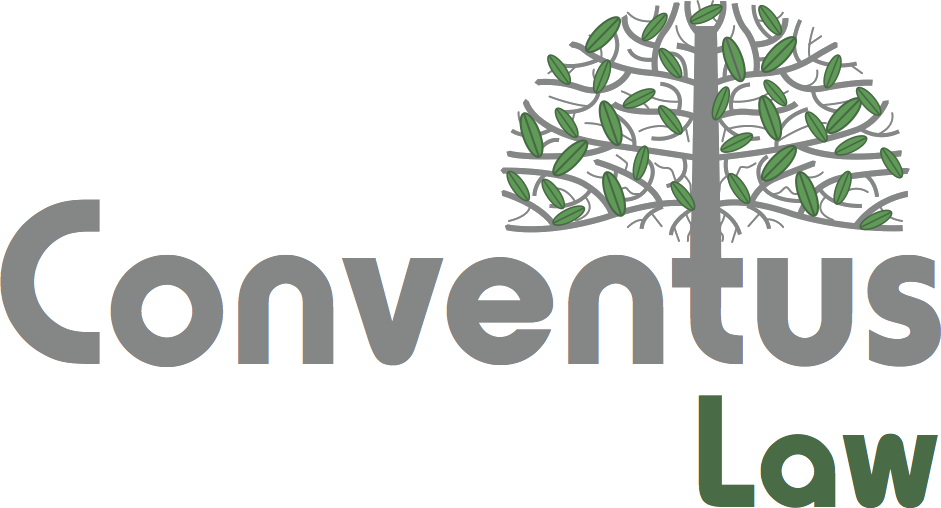The Shanghai Stock Exchange (SSE) and the Shenzhen Stock Exchange (SZSE) (the Exchanges) recently announced the start of public consultation regarding the reporting requirements for northbound investors engaged in program trading under the Shanghai-Hong Kong Stock Connect and the Shenzhen-Hong Kong Stock Connect (the Stock Connect, i.e. the program connecting the securities markets of mainland China and Hong Kong). These consultation papers include the reporting guidelines for program trading1 (the Guidelines) and its appendices, the Reporting Form and the Instructions for the Reporting Form.
On May 15, 2024, the China Securities Regulatory Commission (CSRC) issued the Administrative Rules for Program Trading in the Securities Market (Trial), which extend reporting obligations to Stock Connect northbound investors, in accordance with the principle of fair treatment for both domestic and foreign investors (the Principle of Fair Treatment of Domestic and Foreign Investors). This consultation draft of the Guidelines is the ancillary document to the Detailed Implementation Rules for the Management of Program Trading (the Implementation Rules, our client briefing on the final Implementation Rules will follow very soon), which were also published that day and will come into effect on July 7, 2025. These Implementation Rules outline the reporting paths, content, and other requirements for program trading under Stock Connect, while the Guidelines provide further details on theses reporting requirements, including the information to be reported, the reporting timeline, the reporting paths, and the administrative requirements.
According to the Drafting Statement of the Guidelines issued by the SSE and the SZSE, the Principle of Fair Treatment of Domestic and Foreign Investors ensures that the information to be reported, the reporting timeline, the reporting requirements for high-frequency trading (HFT), the responsibilities of brokers, and the supervision of the Exchanges under the Stock Connect regime are generally aligned with the domestic reporting requirements. Besides, adaptive adjustments have been made to accommodate the Stock Connect regime. Principles such as looking-through requirements are introduced as stipulated in the Implementation Rules, and the way to conclude an agreement on the rights and obligations in program trading is adjusted to ensure a seamless integration with the existing rules. Considering the regulatory cooperation between mainland China and Hong Kong, as well as the practices of the Hong Kong market, adjustments have also been made to provisions that are not applicable to certain Stock Connect investors.
Following is a brief introduction to the Guidelines.
I. Scope of Application
The Guidelines apply to all investors engaged in the program trading of stocks, funds, and other securities listed on the SSE or the SZSE via Stock Connect. This includes all clients of the Hong Kong Stock Exchange (HKEX) participants involved in program trading through Stock Connect, and all HKEX participants engaged in program trading, whether in proprietary trading or asset management (Northbound Brokers), via Stock Connect.
II. Reporting Path
The Guidelines mandate a “report first, trade later” requirement. Clients of HKEX participants shall report via the HKEX participants who accept their trading orders. After a HKEX participant verifies and confirms the client’s report, the client may proceed with program trading. HKEX participants are required to submit a report to the SSE or the SZSE through the HKEX Securities Trading Services Company within five Stock Connect trading days upon confirmation. The HKEX Securities Trading Services Company will send the report to the SSE or the SZSE on each Stock Connect trading day.
Clients and HKEX participants may agree, via an entrustment agreement or other appropriate methods, that HKEX participants may automatically generate or place trading orders through algorithm programs. In such cases, HKEX participants may fulfill the program trading reporting obligations on behalf of their clients.
When a HKEX participant engages in proprietary program trading, it shall report directly to the HKEX Securities Trading Services Company, and only after the report has been submitted and confirmed by the SSE or the SZSE, may the HKEX participant proceed with the program trading.
III. Information to be Reported
The information required for program trading reporting includes:
(1) Basic information, including the name of the investor, the brokers’ client code, the HKEX participants who accepted the entrustment and the product manager;
(2) Fund information, including the size and source of the funds under the brokers’ client code, the size and source of the leveraged funds and the leverage ratio;2
(3) Transaction information, including the types and main contents of the trading strategies3 under the brokers’ client code, the method of executing trading orders, the highest order placement rate and the highest number of order placement per day;
(4) Trading software information, including the software name, version number and the developer;
(5) Other information required by the Exchanges.
It is worth noting that the SSE and the SZSE may request that the HKEX contact northbound investors and ask for their cooperation in providing information, and the investors should actively comply.
The Reporting Form is generally consistent with the reporting form used for domestic program trading investors. Nevertheless, considering the practices of the Hong Kong market, the Instructions for the Reporting Form incorporate adjustments for certain fields. For instance, as illustrated in the Drafting Statement of the Guidelines, if an abnormal situation in relation to Stock Connect investors arises, the SSE or the SZSE may request that the HKEX promptly contact the participants for details according to the regulatory cooperation arrangements between the markets of mainland China and Hong Kong. As a result, the contact information of the participants or their clients reporting to the SSE or the SZSE is considered less critical, and thus such fields are designated as optional. Fields such as product codes and futures market account codes, which are not directly identifiable in the Hong Kong market, are also marked as optional.
IV. Additional Reporting Requirements for HFT
Investors engaged in high-frequency trading4 as defined in the Implementation Rules, are required to report the following information to the Exchanges, in addition to the basic information mentioned above, namely, (i) the location of the high-frequency trading system server; (ii) the test report of the high-frequency trading system; (iii) emergency plans for any high-frequency trading system malfunction; and (iv) other information as required by the Exchanges. The SSE or the SZSE may also adjust the criteria for high-frequency trading and the scope of the information required for reporting.
The Guidelines exempt investors that satisfy all the following conditions from the additional reporting requirements:
(1) Investors who fall within the scope of a) fund managers who exclusively issue public funds; b) HKEX participants engaged in asset management business and who meet the relevant requirements; c) northbound program trading investors with Qualified Foreign Institutional Investor (QFII) licenses; and d) other investors recognized by the Exchanges.
(2) Investors who execute trade orders automatically (only at the stage of order execution) by using pre-set order splitting algorithms for the purpose of reducing the market impact of large orders or ensuring fairness across different investment portfolios; and
(3) Investors who have already fulfilled the basic information reporting obligations as outlined above.
V. Responsibilities of Northbound Brokers
The Guidelines set forth the following key responsibilities for HKEX participants:
(1) Written Agreements on Rights and Obligations: When accepting a client’s entrustment for program trading, HKEX participants must enter into a written entrustment agreement, or through other appropriate methods, clearly define the rights and obligations related to program trading, clarifying the broker’s management responsibilities and the risk control requirements for clients.
(2) Monitoring, Identification, Reminders and Information Verification Requirements: HKEX participants are required to establish a mechanism for monitoring, identifying, and verifying compliance with the program trading reporting requirements. This shall enable the prompt identification of clients who trigger reporting or report modification obligations, ensuring that clients are reminded to fulfill their reporting duties. It also enables HKEX participants to verify the information provided by a client within the scope of the information accessible to them.
(3) Refusal of Entrustment and Reporting: In cases where a client fails to report the information or the relevant changes as required, or where the reported information is inaccurate, HKEX participants shall remind the client to fulfill their reporting obligations. If, despite of these reminders, the client continues to neglect their duties or refuses to cooperate with the HKEX participants in their verification efforts, the participant must, in accordance with the written agreement (e.g., the entrustment agreement), refuse to accept the client’s program trading instruction and report to the HKEX Securities Trading Services Company.
VI. Legal Consequences of Violations
The Guidelines specify that if program trading investors fail to fulfill their reporting obligations or the obligations to report significant changes as required, report incomplete information, submit inconsistent information with actual trading behaviors, or fail to meet the reporting administrative requirements, the SSE or the SZSE may request HKEX impose self-disciplinary measures or disciplinary sanctions. In the event of suspected legal violations, the SSE or the SZSE may escalate the matter to the CSRC for investigation and further action.
VII. Looking-through Requirements for Swap
Based on the Guidelines, where northbound program trading investors engage in total return swap transactions involving SSE or SZSE-listed stocks through their own accounts via program trading, the Exchanges may, under the Stock Connect regulatory cooperation framework, exercise their “looking-through” rights to obtain the counterparty’s information.
VIII. Grace Period
A three-month grace period will be given from the issuance of the final Guidelines for investors who have already engaged in program trading prior to the implementation.

1. Guideline No. 2 on the Application of the Shanghai Stock Exchange Securities Trading Rules — Program Trading Reporting for Shanghai-Hong Kong Stock Connect Investors and Guideline No. 3 on the Shenzhen Stock Exchange Securities Trading Business — Program Trading Reporting for Shenzhen-Hong Kong Stock Connect Investors.
2. Institutional investors opening accounts with multiple HKEX participants using the same identification number may choose to report the fund information through a single participant.
3. According to the Instructions for the Reporting Form, quantitative trading investors are required to fill out the primary and secondary strategy types, along with an overview of the strategies adopted, while the non-quantitative traders may only provide the method of executing trading orders and are not required to detail quantitative strategies.
4. Pursuant to the Implementation Rules, the following trading behaviors by an investor are classified as high-frequency trading:
(1) The maximum number of order placement/cancellation per second for a single account reaches 300 orders or more;
(2) The maximum number of order placement/cancellations per day for a single account reaches 20,000 or more;
(3) Other circumstances as determined by the Exchanges.






